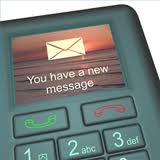Most of people didn't know that sms in the inbox can be made by the owner of the mobile phone, devoid of any interference of others. It is easily seen from the number of people who believe that the contents of the inbox are strong and authentic evidence that others have sent sms to him.
What if your friend says that the X has been sending text messages on her insolent tone? Maybe you do not believe it? What if you find "proof" sms from X whose contents are insolent tone? For the layman this sms is a very strong proof, indisputable that X actually has sent a sms tone of disrespectful, and therefore X should be taught a lesson.
Mobile phone is no different with computers, there is a processor, memory, storage and of course the operating system. Mobile phone operating system that mostly known are the Windows Mobile and Symbian. Inbox, sent, draft etc. are also more or less like a folder. Regular practice in mobile phone is copying / moving messages from one folder to another as from the draft sent to or from the inbox to the saved messages. There is no menu to create and store sms in the inbox. But that does not mean impossible, because the actual function or the fire in the operating system already available. Living alone made the program to do it.
Another scenario is very much social engineering, depending on each person's imagination. This is dangerous because so many people who strongly believe that the text in your INBOX is really sent by people who look at the “from” field, so easily provoked and trusting.
It should be understood that the sms can be spoofed so it is not necessarily a sms in the inbox hp really sent by people listed in the field From / Sender.

